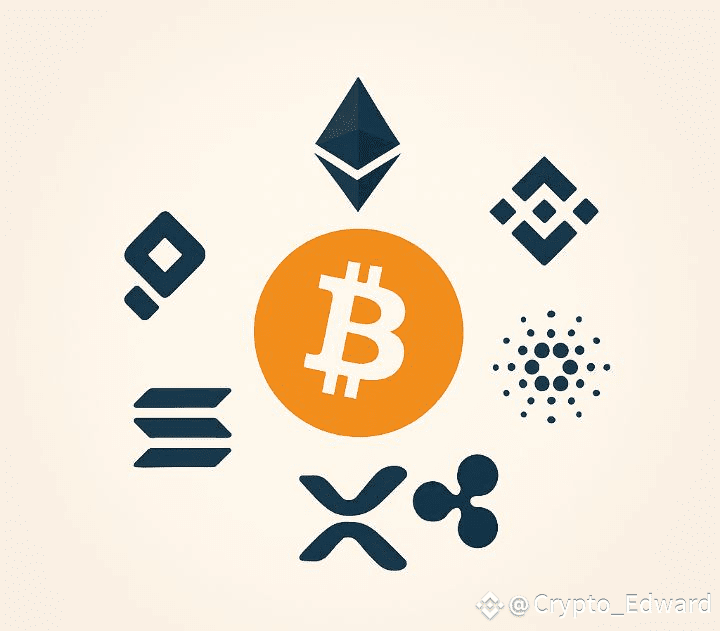1.1 Introduction
In the world of financial markets, certain chart patterns stand out as beacons of potential trend reversals. Among them, the Inverse Head & Shoulders pattern is widely regarded as one of the most reliable bullish reversal formations. It appears rarely on macro timeframes, but when it does, its implications can be substantial — especially in cryptocurrency markets, where volatility magnifies the move once a breakout is confirmed.
The chart under discussion is not just a random setup. It represents a structural transition point in the Altcoin vs. Bitcoin dominance cycle, and could mark the beginning of a multi-month — potentially multi-year — shift in market leadership from Bitcoin to altcoins. This transition is often referred to by traders as Altcoin Season.
1.2 Understanding the Pattern
In its simplest form, the Inverse Head & Shoulders consists of:
Left Shoulder: An initial price decline followed by a rebound.
Head: A deeper price drop, creating the lowest low of the formation.
Right Shoulder: A shallower decline, ending higher than the head, followed by another rally.
Neckline: A horizontal or slightly sloping resistance level connecting the highs of the two shoulders.
In our chart:
Left Shoulder formed in early 2023.
Head bottomed in mid-2023.
Right Shoulder developed in early 2024.
The Neckline sits near the 47 level, acting as the pivotal breakout point.
The setup aligns perfectly with the textbook diagram of an Inverse Head & Shoulders, indicating that market psychology is unfolding in line with historical patterns.
1.3 Market Psychology Behind the Pattern
Every chart pattern is a visual representation of collective market sentiment. In the context of this Inverse Head & Shoulders:
Left Shoulder: Sellers dominate, but buyers manage a short-lived recovery.
Head: Panic selling intensifies, driving prices lower than the left shoulder. This phase often traps late sellers at the bottom.
Right Shoulder: Sellers attempt to regain control, but buyers step in earlier, preventing a new low. This signals strengthening demand.
Breakout: A surge above the neckline represents a decisive shift in sentiment, as trapped sellers exit and new buyers rush in.
The right shoulder’s higher low is critical — it’s a sign that buyers are no longer waiting for deeper dips. In the context of altcoin dominance, it signals that capital is flowing away from Bitcoin into alternative crypto assets.
1.4 Historical Context of Altcoin Seasons
Cryptocurrency history shows repeating cycles of Bitcoin dominance rising and falling. When Bitcoin dominance declines after a strong BTC rally, it often triggers an altcoin season — a period when many altcoins outperform Bitcoin in percentage gains.
Previous major altcoin seasons include:
Early 2018: Ethereum, XRP, and other majors surged even as Bitcoin began correcting.
Mid-2021: Memecoins and DeFi tokens saw explosive gains while BTC traded sideways.
Late 2023 Mini-Season: Select altcoins like Solana and Avalanche outperformed during Bitcoin’s consolidation.
In each case, the Inverse Head & Shoulders pattern on dominance charts served as a key indicator of the shift.
1.5 Key Technical Levels
From the chart:
Support Zones:
Bitcoin Year Zone (~25) — Historically favors BTC outperformance.
Mid-range (~35–40) — Consolidation zone where altcoins and BTC share momentum.
Resistance Zones:
Neckline (~47) — The critical breakout trigger.
Altcoin Year Zone (~75) — Historically marks peak altcoin dominance.
If price breaks above 47 with volume, the measured move target points toward 75 — a level that, based on historical cycles, could translate into triple-digit percentage gains for many altcoins.
1.6 Risk & Confirmation Signals
No pattern is infallible. Key confirmation points include:
Volume Surge: Breakout above neckline accompanied by high trading volume.
Retest Hold: Price pulling back to retest the neckline and holding it as new support.
Bitcoin Behavior: BTC consolidating rather than rallying aggressively — allowing capital to flow into altcoins.
Risks to watch:
False breakouts due to macroeconomic shocks or BTC volatility.
Regulatory news that disproportionately impacts altcoins.
1.7 Strategic Implications for Traders
A breakout could offer two main trade setups:
Aggressive Entry: Buy just before the neckline breakout, anticipating confirmation.
Conservative Entry: Wait for a confirmed close above the neckline and successful retest.
For investors, the breakout could signal a portfolio rebalance — increasing altcoin exposure for the potential multi-month rally.
1.8 Conclusion & Outlook
The Inverse Head & Shoulders on the altcoin dominance chart is a rare and powerful signal. If confirmed, it could mark the official start of the next Altcoin Season, with capital rotation out of Bitcoin into a wide range of crypto assets. The 47 neckline is the level to watch — break it, and the gates to the Altcoin Year Zone swing wide open.




